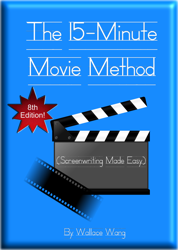In a villain-driven story, such as a James Bond movie, the villain pursues a dangerous goal and the hero has to stop them. Think of “Star Wars” or “Die Hard” where the hero must keep foiling the villain’s actions until finally defeating the villain in the end. In such villain-driven stories, there are usually three layers of obstacles the hero must overcome:
- A large number of henchmen
- A single, powerful henchman
- The villain
In “Die Hard,” the final battle occurs when John McClane defeats the army of terrorists one by one. Then he must fight the henchman whose brother he killed earlier. Because John McClane killed this henchman’s brother, he’s highly motivated to kill John McClane, which makes him dangerous. John McClane barely defeats this henchman and then gets to face the villain.
In “Kill Bill: Vol. 1,” the hero must fight off a large number of swordsmen called the Crazy 88. Their main threat is their sheer numbers but she mows them down fairly easily. Then she faces the personal bodyguard of the villain, an 18-year old girl who swings a dead metal ball on a chain. This 18-year old nearly defeats the hero. Finally, the hero faces the villain and kills her.
Facing a single, powerful villain is one way to tell a story, but another is not to have a single, dominant villain at all. Instead, the hero must overcome villains who are actually friends. This makes defeating them even tougher.
In “Little Miss Sunshine,” there is no single, dominant villain trying to stop the hero from getting to the beauty pageant. Instead, there are numerous villains who get in her way. However, the biggest villain at the end is the hero’s own family and especially her father.
Olive, the hero, has dreamed about competing in a beauty pageant and her family has sacrificed their time to drive her there. Along the way they must overcome a defective van, a hospital administrator who won’t let them leave their grandfather’s dead body behind, and a police man who threatens to find the grandfather’s dead body in the back. Then there’s a snooty beauty pageant administrator who refuses to register the hero for the beauty pageant because she’s a few minutes late.
However, the real threat to the hero comes from her own family. First, her uncle, brother, and mother try to convince her not to compete because they fear she’ll embarrass herself. Second, her own father tries to convince her not to compete and even steps on stage, under the prodding of the beauty pageant administrator, to yank the hero off the stage.
Because the hero’s family has been supportive of the hero throughout the story, the fact that they turn against her suddenly makes them a huge threat to the hero in ways that an outside villain could never do. When the hero’s own father tries to yank her off the stage, he’s the biggest threat of all because he truly wants to protect her but doing so will destroy the hero’s dream.
In “Top Gun: Maverick,” the hero, Maverick, faces numerous villains who should actually be friends like this:
- Maverick tests a Mach 10 experimental aircraft against the wishes of an admiral
- Maverick gets sent to Top Gun where he faces a commanding officer who doesn’t want him
- Among the Top Gun pilots Maverick must train, he meets an arrogant pilot nicknamed Hangman who antagonizes practically everyone around him
In the above scene, Maverick meets a commanding officer nicknamed Cyclone, who doesn’t want Maverick around. Later, Cyclone dismisses Maverick and takes over the training mission himself, only for Maverick to steal a jet and prove the mission can be done. Even though Cyclone is on the same side as Maverick, Cyclone acts like a villain because he has the power to ground Maverick.
Hangman, the arrogant pilot, antagonizes the other pilots and acts like another villain, even though they’re both on the same side. What makes Hangman and Cyclone tough villains is that they should be supporting Maverick but because of their own reasons, they’re working against him.
Unlike stereotypical villains in James Bond movies that are all bad, the villains in “Top Gun: Maverick” are actually good. Their behavior just puts them at odds against Maverick. By having a friend act as a villain, a story can feel richer and more engaging precisely because such a villain should actually be helping the hero. Instead of defeating these types of villains by killing them, the hero must defeat these villains by changing them, and that creates a far more emotionally interesting experience than simple physical fights between a good guy and a bad guy.
When writing your own screenplay, think of how friends can actually play the role of villain against the hero. Such friend/villain will make life difficult for the hero and force them to deal with this threat on an emotional level that can’t help but create a compelling story.
Sign up to take a FREE course about how to write scenes in a screenplay.

